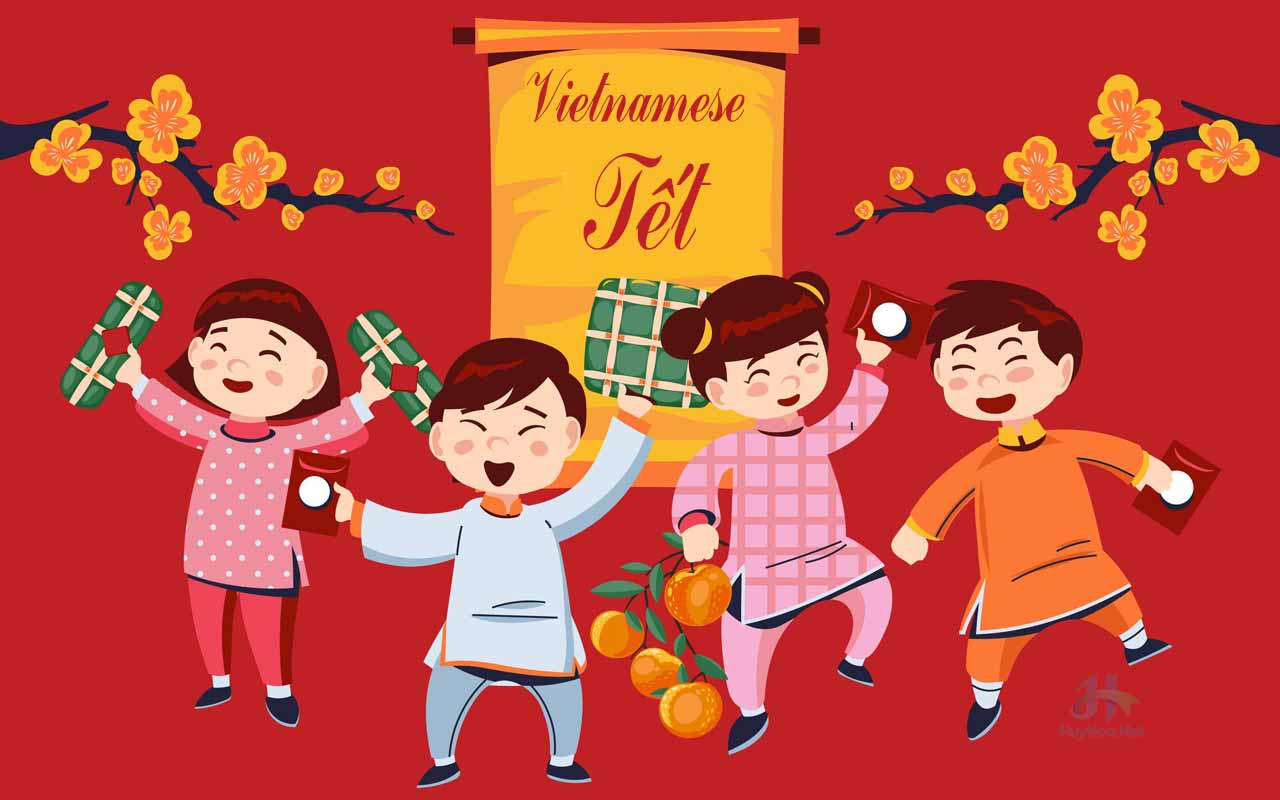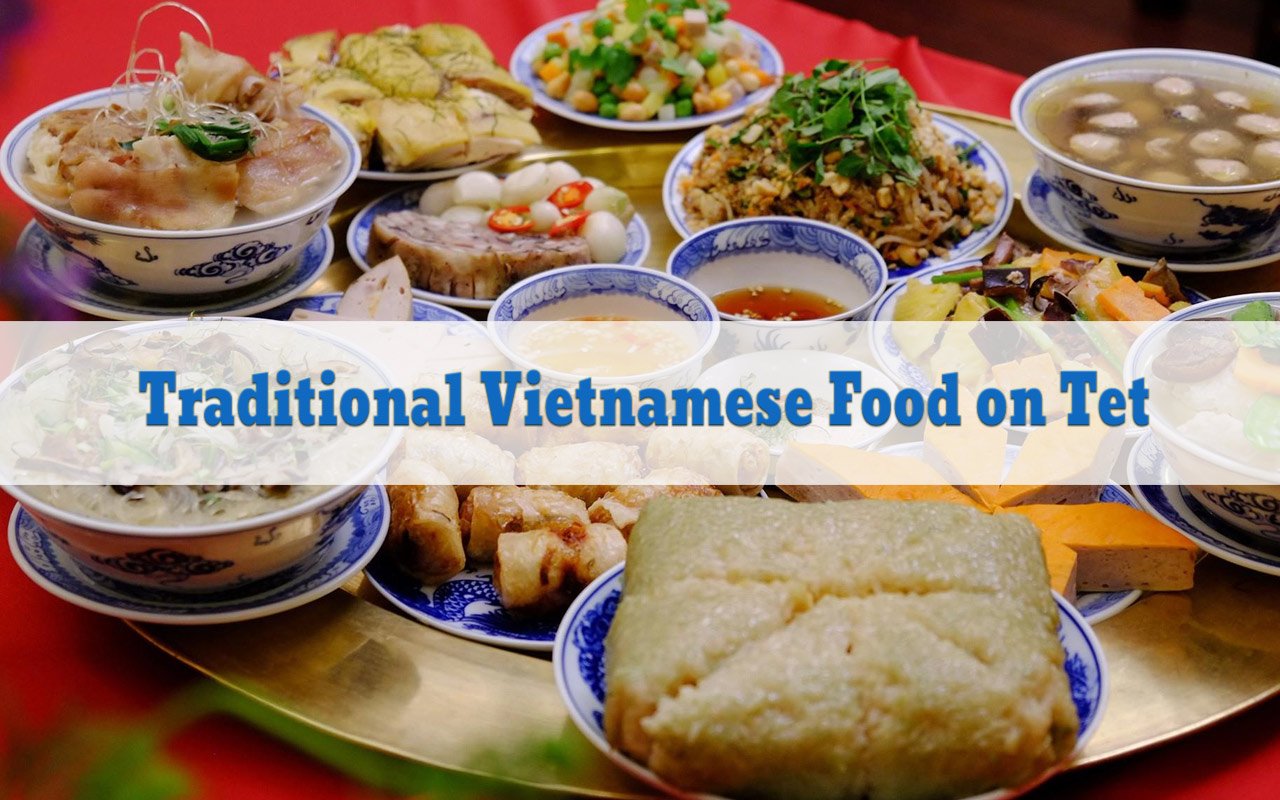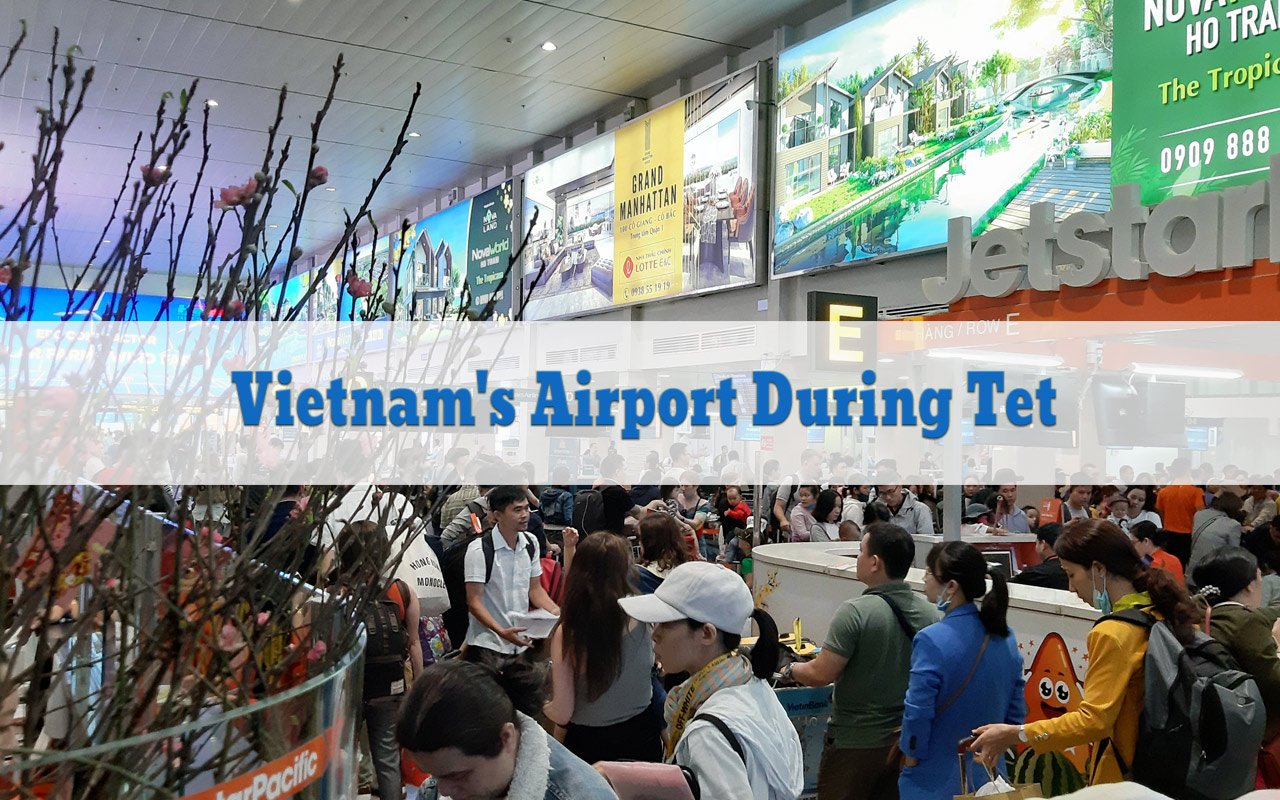Vietnamese Lunar New Year, also known as Tet, is the most important holiday in Vietnam. It is a time for family reunions, honoring ancestors, and praying for good luck in the new year. Tet is a time for families to come together and celebrate the beginning of the new year. This guide will provide you with everything you need to know about Vietnamese Tet, including its history, traditions, and customs.
Vietnamese Tet is a three-day festival in Vietnam that begins on the first day of the lunar calendar and lasts for three days. Before the Tet holidays, people began taking days off on December 26th to clean and decorate their homes. The work schedule is usually restored on January 5th of the Lunar Calendar.
What to know about Vietnamese Tet Festival?
The Vietnamese Tet festival is the most important holiday in Vietnam. It is a time for families to come together and celebrate the Lunar New Year. Tet is a time for joy and celebration, and it is a time to reflect on the past year and look forward to the new year.
There are many traditional customs associated with Tet, including:
- Cleaning the house to sweep away the old year and welcome the new.
- Cooking special foods, such as bánh chưng and bánh tét, which are made with sticky rice, pork, and mung beans.
- Visiting temples and pagodas to pray for good luck in the new year.
- Giving and receiving lucky money, known as lì xì.
- Wearing new clothes.
- Visiting friends and family.
Tet is a time of great joy and celebration in Vietnam. People decorate their homes with red lanterns and flowers, and they exchange gifts and greetings. There are also many public celebrations, including street performances, music, and dancing.
If you are ever in Vietnam during Tet, be sure to experience this amazing festival for yourself. It is a truly unforgettable experience!
Here are some additional details about the Vietnamese Tet festival:
- Date: The Vietnamese Tet festival is celebrated on the first day of the Lunar New Year. The date of the Lunar New Year changes each year, but it usually falls in late January or early February.
- Duration: The Vietnamese Tet festival typically lasts for one week.
- Significance: The Vietnamese Tet festival is a time for families to come together and celebrate the Lunar New Year. It is also a time for reflection and renewal.
- Customs: There are many traditional customs associated with the Vietnamese Tet festival. Some of these customs include cleaning the house, cooking special foods, visiting temples and pagodas, giving and receiving lucky money, wearing new clothes, and visiting friends and family.
- Celebrations: There are many public celebrations that take place during the Vietnamese Tet festival. These celebrations include street performances, music, and dancing.
If you are ever in Vietnam during Tet, be sure to experience this amazing festival for yourself. It is a truly unforgettable experience!
The Vietnamese Tet is a celebration of deep humanistic significance; it is a day for all people to reconnect with their families, return to their country, and commemorate their forefathers and mothers.
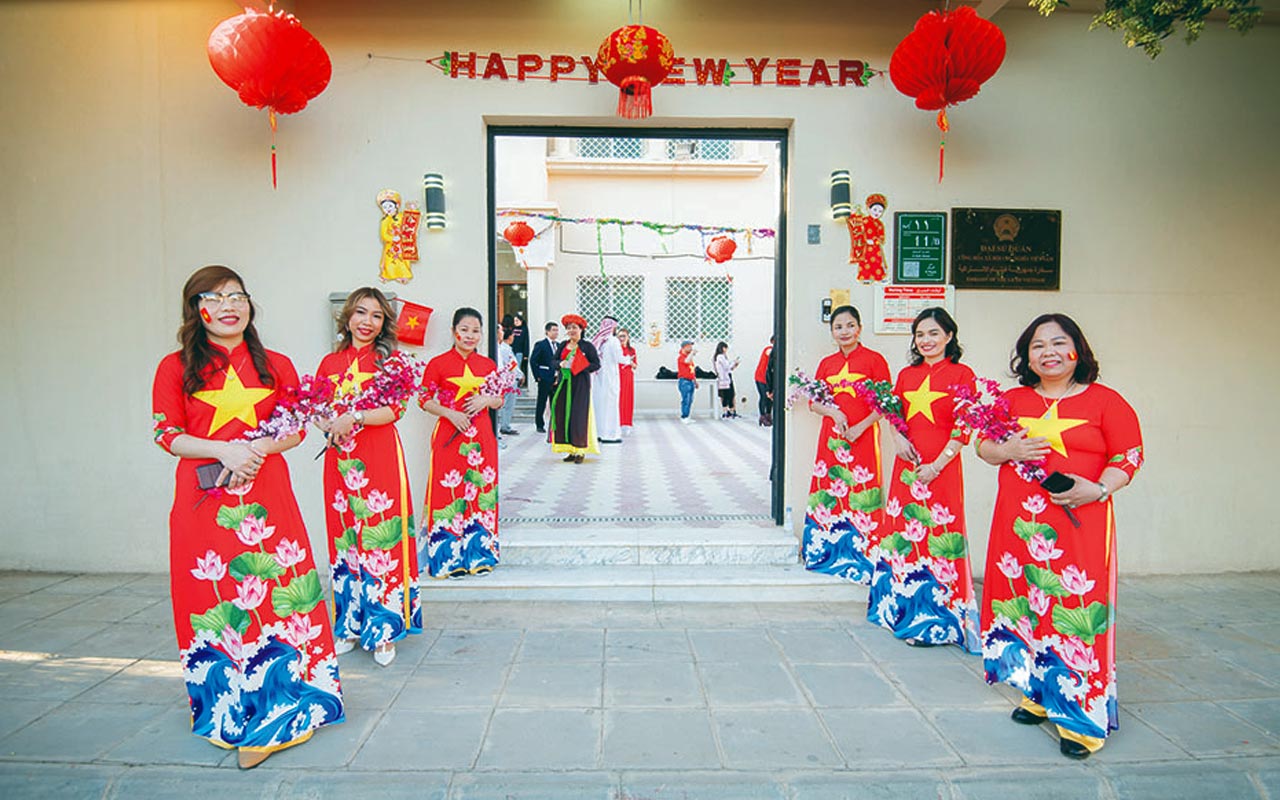
The Lunar New Year, the most important of Vietnam’s traditional celebrations, marks the confluence of the old and new years, of a cycle of activity of heaven and earth, of all things and plants.
The Vietnamese Lunar New Year has a deep human connotation, symbolizing the duration of life and people’s desire for Heaven-Earth-Human peace.
2024 - Year Of The Dragon
The 2024 Vietnamese Lunar New Year falls on February 10, 2024 of the solar calendar
TET 2026 COUNTDOWNDaysHoursMinutes
Table of Contents
- 1 History of Tet
- 2 The Importance of Vietnamese Tet Customs
- 3 Tet Foods
- 4 Tet Essentials & Traditions
- 5 Vietnam Travel Tips During Tet
- 6 Conclusion about Tet
History of Tet
The Tet is an expression of the interaction between people and environment in the spirit of agricultural culture, with ethnic clans and communities, and with divine and lofty confidence in spiritual life…
Tet, also known as Tet Nguyen Dan, is the most important holiday in Vietnam. It is a time for family reunions, feasting, and celebrating the Lunar New Year. Tet is a time of great significance for Vietnamese people, and it is a time when they reflect on the past year and look forward to the new year.
The Tet holiday has a long and rich history. It is believed to have originated in China over 2,000 years ago, and it spread to Vietnam over 1,000 years ago. Tet is a time of great significance for Vietnamese people, and it is a time when they reflect on the past year and look forward to the new year.
The Tet holiday is a time for family reunions. Vietnamese people travel from all over the world to be with their families during Tet. The holiday is also a time for feasting.
Vietnamese people prepare special foods for Tet, such as banh chung (sticky rice cake) and banh tet (glutinous rice cake with mung bean filling). Tet is also a time for celebrating the Lunar New Year. Vietnamese people decorate their homes with red banners and flowers, and they set off fireworks to welcome the new year.
The Tet holiday is a time of great joy and happiness for Vietnamese people. It is a time to celebrate the new year, to be with family and friends, and to reflect on the past year.
Tet (Vietnamese New Year) is the most important celebration in Vietnamese culture. It celebrates the arrival of spring based on the Vietnamese calendar, which is mostly based on the lunisolar Chinese calendar and usually has the date in January or February in the Gregorian calendar.
The name Tet is a shortening of Tết Nguyên Đán, literally written as tết (meaning festivals; only used in festival names) and nguyên đán which means the first day of the year. Both words come from Sino-Vietnamese respectively, 節 (SV: tiết) and 元旦.
Tết Nguyên Đán is not to be confused with Tet Trung Thu (Mid-Autumn Festival), which is also known as Children’s Festival in Vietnam. “Tết” itself only means festival but is often colloquially known as “Lunar New Year” in Vietnamese, as it is often seen as the most important festival amongst the Vietnamese and the Vietnamese diaspora, with Tết Trung Thu regarded as the second-most important.
Here are some additional details about the Tet history:
- The Tet holiday is celebrated on the first day of the Lunar New Year, which is based on the lunisolar agricultural or Nongli calendar. The date of the holiday changes each year, but it usually falls between January 21 and February 20.
- The Tet holiday is a time for Vietnamese people to clean their homes, buy new clothes, and prepare special foods. They also visit their ancestors’ graves and offer prayers.
- On the first day of Tet, Vietnamese people wake up early and visit their parents and grandparents. They exchange gifts and red envelopes filled with money (Li Xi). They also enjoy a special breakfast of sticky rice cakes, spring rolls, and other traditional foods.
- The Tet holiday is a time of great joy and happiness for Vietnamese people. It is a time to celebrate the new year, to be with family and friends, and to reflect on the past year.
Although the origins of Tet are unknown, there is evidence that the Vietnamese New Year began in China and was introduced to Vietnam during 1000 years of Northern dominance.
However, according to the legend of “Banh Chung and Banh Day,” Vietnamese people have been celebrating Tet since before the Hung Kings. A growing number of historians and experts are discovering new evidence that the Vietnamese Tet predates the Chinese New Year.
The Importance of Vietnamese Tet Customs
In Vietnamese culture, the Lunar New Year is the biggest event. Tet marks the start of a new year with the greatest wishes for a peaceful, prosperous, and prosperous year ahead.
After a long year away from home, the Lunar New Year is also a time when people return home to meet and see each other.
There are many traditional customs associated with Tet, including:
- Cleaning the house to sweep away the old year and welcome the new.
- Cooking special foods, such as bánh chưng and bánh tét, which are made with sticky rice, pork, and mung beans.
- Visiting temples and pagodas to pray for good luck in the new year.
- Giving and receiving lucky money, known as lì xì.
- Wearing new clothes.
- Visiting friends and family.
Tet is a time for joy and celebration, and it is a time to reflect on the past year and look forward to the new year.
This is a highly significant holiday for Vietnamese people, thus there are rituals and habits in this traditional New Year that have been passed down from ancient times to the present day and have gradually become a beauty in Tet culture.
These traditions can also be used to express wishes for a joyful and peaceful new year.
Vietnamese people’s traditional Tet holiday customs
The most important holiday for Vietnamese people is the Lunar New Year, which is observed on the first day of the first lunar month. Tet is a time for family members to get together, exchange New Year’s greetings, pay one another a visit, and wish each other a good and prosperous year ahead.
In addition to the beauty of the Vietnamese New Year tradition, there are many intriguing and distinctive rituals to celebrate Tet in Vietnam.
So, how do Vietnamese families spend their Tet days? There are some lovely aspects to the Vietnamese people’s Tet celebrations.
- Making offerings and praying for Kitchen Gods.
- Buns of Banh Chung
- Presentation of a Five fruit tray
- Visiting the graves of ancestors
- New Year’s Eve celebrations
- Be the first New Year’s caller – Xong Dat
- Express New Year’s Day wishes
Furthermore, depending on the ethnic group and region, each location may have its own set of customs. Vietnamese people, on the other hand, have begun to prepare for Tet around a month before the new year.
- Decorate the house and clean the altar
- Shopping to prepare for Tet
- Complete the necessary work
- Pay off old debts
- Make up for yourself
- Prepare gifts and money for New Year’s Eve (Li Xi)
Do and Don’t During the Tet Holiday in Vietnam
10 taboo things not to do on New Year’s Day
- Do not cry sad, say unhappy things
- Do not sweep the house, and take out the trash for 3 days of Tet
- Cavalier for water, for fire
- Do not borrow or repay on the first day of the year
- Do not wear black and white clothes
- Don’t go to New Year’s greetings on the first morning
- Do not break furniture in the house
- Not released on the 5th
- Do not eat unlucky foods such as black dishes or eat sacred animals such as dogs, or cats, …
- Do not wish Tet to those who are sleeping
Things to do during Tet to have a healthy and lucky New Year
- Going to the temple to pray for peace
- Say and do nice things
- Vegetarian
- Giving and receiving red envelopes (li xi)
- Buy salt
- Happy, smiling on Tet days
- Choose a beautiful date and time to depart
- Choose the right person to “xông đất”
- Going to Tet market, flower market
- Wear new clothes, red clothes
- Listen to fun, exciting music
- Choose to buy plants and flowers
- Write a New Year’s Wish
- Choose a good time to begin new-year writing
- Buy gold on the god of fortune
- Buy lighters
- Eat lucky food
Vietnamese Traditional Calligraphy During Tet
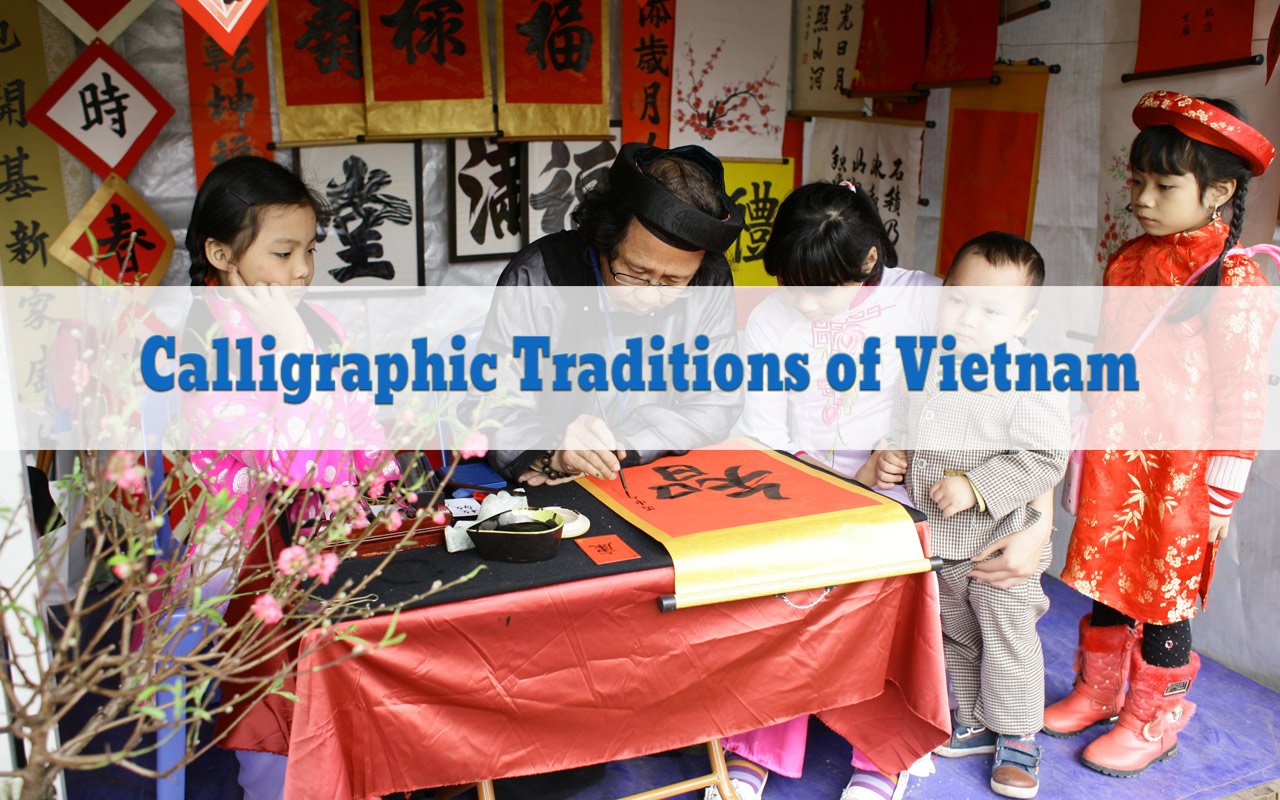
In Vietnam, the Tet celebration is without a doubt the most important and anticipated event of the year. Several ancient significant practices are observed throughout Tet, with calligraphy hanging as one of the most beautiful.
The tradition not only reflects the Vietnamese people’s reverence for knowledge but also serves to preserve a time-honored pastime. For thousands of years in Vietnam, significant characters printed on special sheets have been worshiped as symbols of good luck.
When those connotative letters are used to generate new meanings, Vietnamese calligraphy becomes even more complex and intricate.
To provide an example, “Phúc” is frequently combined with “Đức” to produce the phrase “Phúc Đức,” since Phúc in Vietnamese refers to enjoyment derived through acts of generosity or compassion.
Those activities are known as one person’s “Đức,” while “Phúc” is the effect of “Duc.”
Ong Do Street at the Temple of Literature, which is open on New Year’s Day, is the place to ask for the first letter of the year for many families.
Asking for the first letter of the year to wish the best for your family and yourself, marking a new year has come, but this activity also shows the traditional beauty inherent in the Vietnamese people from the past.
According to legend, even though a person has no interest in calligraphy, if she is recognized and presented with a piece of calligraphy by a calligrapher, she is a virtuous person with something exceptional.
The receiver’s family and she would enjoy an exclusive godsend for the entire year, as well as all of their desires being fulfilled during that time.
“Li xi” – Lucky Money for Tet
When visitors visit Vietnam during the opening days of the Lunar New Year, they may be surprised to witness toddlers who are overjoyed and thrilled to receive little red envelopes from adults.
Is there anything inside those envelopes and what are they? The answer is straightforward. It’s “li xi” (in the south) or “lucky money” (in the north) – or fortunate money, a traditional ritual that’s popular not just in Vietnam but also in other Asian civilizations.
“Li xi” is an essential aspect of Tet Festival rituals in Vietnam, especially among youngsters, who will remember Tet as the start of a good year. According to the Vietnamese Institution of Linguistics’ definition, “li xi” means “giving money to youngsters to welcome the new age on the first day of the Lunar New Year.”
It is a tiny sum of money that might bring good fortune in the following year. However, “li xi” is not confined to the first day of the Tet Holiday, but may extend until the 9th or 10th day, and is given when the adults first meet the youngsters. Furthermore, descendants have the habit of presenting fortunate money to parents or grandparents to demonstrate filial devotion.
Aside from the money, the small red envelope has its own significance. It depicts the secrecy and seclusion to avoid comparison; as adults want the children to see the money as a New Year’s gift, rather than being envious of getting less than other youngsters.
According to Asian traditions, the color red, which is commonly seen at Vietnamese festivities, represents prosperity and good fortune. “Li xi” is also a sign of flukes, because the more “li xi” a person offers or receives, the more flukes he will acquire.
Folk Games During Tet Holidays

The atmosphere is jubilant and bustling everywhere in the early days of spring. This day is also a time for fun and entertainment activities to commemorate the arrival of spring, which takes place throughout the country, from rural to metropolitan locations. Tet, in particular, provides an opportunity for individuals to participate in long-established traditional games.
These folk games are incredibly rich, evoking the distinct personality of each region. Folk games are essential during Tet and festivals because people need games to be happier, more integrated, and closer to one another. Adults engage in tug of war and wrestling, while youngsters jump rope and play volleyball…
Swinging is a very popular folk game in Vietnam. Swinging usually takes place on traditional New Year days or in early spring festivals at village festivals. According to many studies, this game has existed since before the Han Dynasty.
Folk games are more than just pleasures; they also include cultural treasures and traditional national values.
In comparison to other occasions, the folk game on the Tet holiday is a little more exceptional, with an incredibly energetic environment, bursting with a competitive spirit, and lots of laughing.
Traditional New Year in Vietnam includes a number of traditional games, such as:
- Play swing (Đánh đu)
- Wrestling game (Đấu Vật)
- Tug of war
- Play Dao (Đánh đáo)
- Go on stilts (Đi cà kheo)
- Crush the clay pot
- Cockfighting game
- Play human chess
- Throw a ball (Ném còn)
Frequently Asked Questions About Traditional Vietnamese Games
What traditional games am I able to play in Vietnam?
With the exception of human chess, almost all classic games are fairly simple to learn and play, therefore you can play with the majority of the games included in the article. It is due to the fact that the human chess game requires knowledge of Chinese chess and the art of movement, and martial arts may be necessary.
How can I take part in traditional Vietnamese games?
To play traditional Vietnamese games, as well as others, you must first learn the rules of the game. As a result, if you are a foreigner, you should join a buddy so that he or she can show you how to play the game.
Are traditional games held on regular days?
Traditional Vietnamese games frequently need a large number of participants. As a result, they are frequently observed around the cultural Lunar New Year – Tet holidays, or at large village festivities. There are many individuals that engage in the games at that time.
However, in order to provide tourists with an authentic Vietnamese cultural experience, the game of crushing clay pots is frequently practiced every night in the historic town of Hoi An.
If you wish to participate, come to Hoi An’s old town in the evening. You can also participate in daily Vietnamese folk games at the Vietnam Museum of Ethnology on Nguyen Van Huyen Street, Cau Giay, Hanoi.
Origin Of Vietnam Tradition Xông đất
Tet festival has been the most significant and greatest celebration of the year for Vietnamese, from Kinh people to ethnic communities, year after year. One of the important rituals on this crucial occasion appears to be Xong Dat (the first visit to a residence in a year).
People in Vietnam are becoming more conscious of the importance of this culture. It has been extensively modified, with a myriad of norms and requirements that both preserve the essence of Xong Dat heritage while adapting to modern Vietnamese living.
Choosing the first guest to come to the family might be influenced by a variety of different variables. Some people may not have the most compatible astrological with the home head, but they are considered to be affable and “luck-generators,” which the host prefers.
The converse is also true. The Xong Dat tradition has risen in prominence over time as people place a larger priority on spiritual and religious life, and picking the proper one for Xong Dat has become more difficult.
Tet Foods
Tet is the most important holiday in Vietnam. It is a time for families to come together and celebrate the Lunar New Year. Tet food is an important part of the celebration, and there are many traditional dishes that are eaten during this time.
Some of the most popular Tet foods include:
- Bánh chưng (sticky rice cake): Bánh chưng is a traditional Vietnamese square sticky rice cake made with sticky rice, pork, and mung beans. It is a symbol of unity and prosperity.

Bánh chưng is a traditional Vietnamese square sticky rice cake made with sticky rice, pork, and mung beans. It is a symbol of unity and prosperity. This cake is often eaten during Tet, the Vietnamese Lunar New Year.
- Bánh chưng (sticky rice cake): Bánh chưng is a traditional Vietnamese square sticky rice cake made with sticky rice, pork, and mung beans. It is a symbol of unity and prosperity.
- Bánh tét (sticky rice cake): Bánh tét is similar to bánh chưng, but it is round and made with sticky rice, pork, and mung beans. It is a symbol of good luck and happiness.

Bánh tét is similar to bánh chưng, but it is round and made with sticky rice, pork, and mung beans. It is a symbol of good luck and happiness. This cake is often eaten during Tet, the Vietnamese Lunar New Year. - Thịt kho hột vịt (Vietnamese Braised Pork with Eggs): Thịt kho hột vịt is a dish of braised pork and eggs in a sweet and savory sauce. It is a symbol of wealth and abundance.

Thịt kho hột vịt is a dish of braised pork and eggs in a sweet and savory sauce. It is a symbol of wealth and abundance. This dish is often eaten during Tet, the Vietnamese Lunar New Year. - Canh miến (noodle soup): Canh miến is a noodle soup made with chicken or pork broth, rice noodles, and a variety of vegetables. It is a symbol of good health and longevity.

Canh miến is a noodle soup made with chicken or pork broth, rice noodles, chicken gizzard, young eggs, and a variety of vegetables. It is a symbol of good health and longevity. This soup is often eaten during Tet, the Vietnamese Lunar New Year. - Xôi gấc (sticky rice with gac fruit): Xôi gấc is a sticky rice dish made with glutinous rice, gac fruit, and coconut milk. It is a symbol of good luck and prosperity.

Xôi gấc is a sticky rice dish made with glutinous rice, gac fruit, and coconut milk. It is a symbol of good luck and prosperity. This dish is often eaten during Tet, the Vietnamese Lunar New Year. - Mứt (candied fruits): Mứt is a variety of candied fruits that are often eaten during Tet. They are a symbol of sweetness and happiness.

Mứt is a variety of candied fruits that are often eaten during Tet. They are a symbol of sweetness and happiness. These fruits are often eaten as a dessert or snack during Tet.
Tet food is a delicious and important part of the Vietnamese Lunar New Year celebration.
These are just a few of the many traditional dishes that are eaten during this time. So, if you are ever lucky enough to celebrate Tet with a Vietnamese family, be sure to try some of the delicious food!
Want to try some traditional Vietnamese dishes in the US? See the list of restaurants with Vietnamese food in all 50 states of the US
Most Common Seeds & Nuts For New Year in Vietnam
Many families enjoy wonderful seeds & dry nuts as a snack at New Year’s Eve festivities, in addition to a range of jams, sweets, and fruits.
On Tet holidays, popular seeds such as melon seeds, pumpkin seeds, sunflower seeds, and so on are essential elements of the tray of cakes and jams.
Here is a list of some Delicious Nuts For New Year’s Day
- Melon Seeds
- Pumpkin Seeds
- Sunflower Seeds
- Dried Soybeans
- Peas
- Chestnuts
- Laughing Chestnuts
- Cashews
- Almonds
- Macadamia Nuts
Essential Vietnamese New Year’s Food
In Vietnam, each region has a Tet tray with different characteristics. Therefore, it has created a rich and diverse culinary culture only in Vietnam.
Tet comes to every family, whether rich or poor, they are busy preparing the most complete and hearty meal to worship their ancestors.
Grandparents hope that ancestors will bless their children and grandchildren for a happy and prosperous new year, and let the whole family have a happy reunion on the first day of the year.
The traditional dishes on the Tet holiday are not only diverse in dishes but also focus on the presentation form and color of the dish.
Let’s find out the indispensable dishes on the Tet tray of Vietnamese families. You can learn more about these dishes in the article Traditional Vietnamese Food on Tet
- Bánh chưng
- Bánh tét
- Canh măng khô
- Canh bóng bì lợn
- Củ kiệu
- Chè kho
- Dưa hành
- Lạp xưởng
- Nem chua
- Nem rán
- Gà luộc
- Giò lụa
- Giò xào hay giò thủ
- Gỏi cuốn
- Miến xào thập cẩm
- Thịt nấu đông
- Thịt heo ngâm mắm
- Thịt kho Tàu
- Tôm chua
- Xôi gấc
Tet Essentials & Traditions
Vietnamese traditions
Tet is a time of great excitement and celebration in Vietnam. People clean their homes, buy new clothes, and prepare special foods. There are also many traditional activities, such as visiting temples, setting off fireworks, and giving red envelopes filled with money.
Here are some of the most popular Tet traditions:
Ancestor worship: Prior to Tet, families will go to their ancestors’ graves and offer food and drinks. They will also clean the graves and decorate them with flowers.
Family reunions: Tet is a time for family reunions. Vietnamese people usually visit friends and relatives during Tet and exchange New Year’s greetings and special Tet gifts.
Cleaning the house: Vietnamese people believe that it is important to clean their homes before Tet. This is to sweep away any bad luck from the previous year and to welcome the new year with a clean slate.
Buying new clothes: Buying new clothes is a popular tradition during Tet. This is a way to symbolize the start of a new year and to look forward to the future.
Preparing special foods: Tet is a time for special foods. Some of the most popular Tet foods include “bánh chưng”, “bánh tét”, and “canh khổ qua”.
Visiting temples: Visiting temples is a popular activity during Tet. This is a way to pray for good luck in the new year and to pay respects to the ancestors.
Setting off fireworks: Setting off fireworks is a popular way to celebrate Tet. The fireworks are a symbol of joy and excitement for the new year.
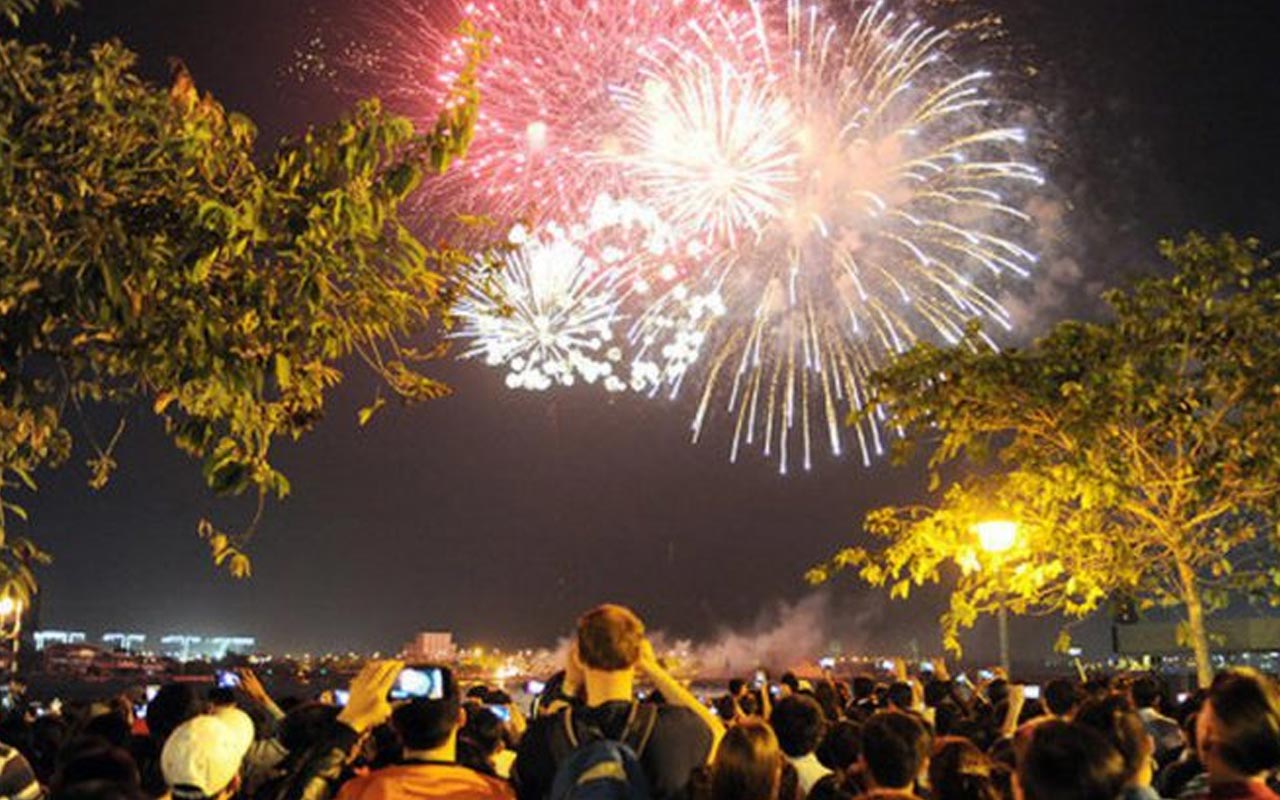
Giving red envelopes: Giving red envelopes, also known as lì xì, is a popular tradition during Tet. The red envelopes are filled with money and are given to children and unmarried adults. The money is a symbol of good luck and prosperity for the new year.
Tet Music & Dance
Tet music and dance are an important part of the festivities.
Tet music is often upbeat and festive, with catchy melodies and lyrics that celebrate the arrival of the new year. Some popular Tet songs include “Bài Ca Tết Cho Em“, “Đoản Xuân Ca“, “Ngày Xuân Long Phụng Sum Vầy“, “Ngày Tết Quê Em” and “Đi Về Nhà“.
Tet dance is also an important part of the festivities. There are many different types of Tet dances, but they all share a common theme of celebration. Some popular Tet dances include the Lion Dance, the Water Buffalo Dance, and the Múa Lân (Dragon Dance).
Tet music and dance are an important part of Vietnamese culture. They help to celebrate the arrival of the new year and to bring people together.
Here is some additional information about Tet music and dance:
- Tet music is typically played on traditional Vietnamese instruments, such as the Đàn tranh (a zither), the sáo (a bamboo flute), and the trống (a drum).
- Tet dance is typically performed by groups of people, often wearing traditional Vietnamese costumes. Some localities have the custom of dancing lion and dragon during Tet, but this tradition has gradually disappeared. The lion and dragon dance today only appears during the Mid-Autumn Festival
- Tet music and dance can be found in many different settings, including at home, at temples, and at public festivals.
If you are interested in learning more about Tet music and dance, there are many resources available online and in libraries. You can also find Tet music and dance performances at many different venues throughout the world.
Traditional Vietnamese art
Tet art is a vibrant and diverse genre of art that celebrates the Vietnamese New Year. Tet art can be found in a variety of forms, including paintings, sculptures, textiles, and ceramics.
The art often features traditional Vietnamese symbols and motifs, such as the lotus flower, the dragon, and the rooster. Tet art is a way for Vietnamese people to express their hopes and dreams for the new year. It is also a way to connect with their cultural heritage.
Here are some examples of Tet art:
- Paintings: Tet paintings often depict scenes of traditional Vietnamese life, such as people celebrating Tet with their families or visiting temples.
- Sculptures: Tet sculptures can be made from a variety of materials, such as wood, stone, or metal. They often depict animals or other symbols of good luck.
- Textiles: Tet textiles are often decorated with traditional Vietnamese patterns and motifs. They can be used to make clothing, home décor, or other items.
- Ceramics: Tet ceramics are often decorated with traditional Vietnamese designs. They can be used to make plates, bowls, cups, and other items.
Tet art is a beautiful and meaningful way to celebrate the Vietnamese New Year. It is a way for Vietnamese people to connect with their cultural heritage and express their hopes and dreams for the new year.
Tet Flowers & Plants
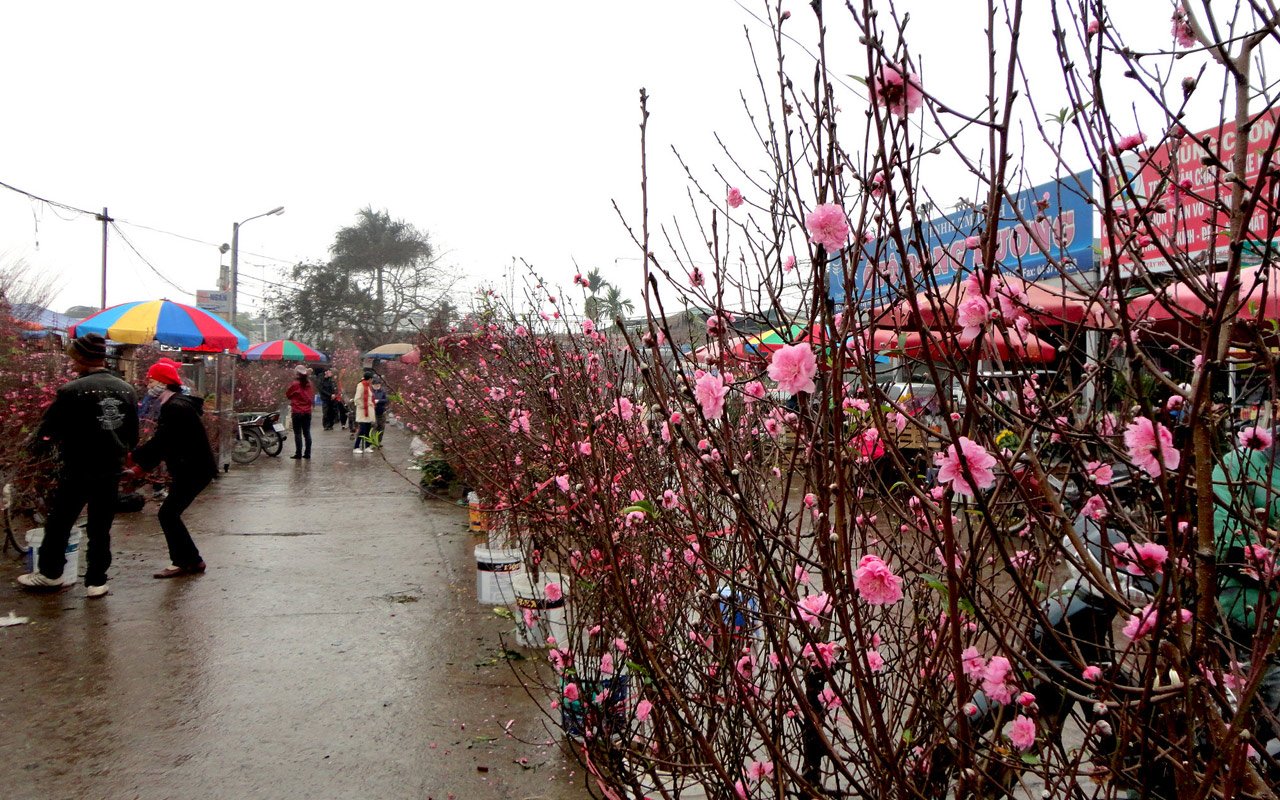
During the Tet holiday in Vietnam, it is customary to decorate homes with vibrant Tet flowers to symbolize new beginnings and prosperity. Flower pots and ornamental plants are not only decorative objects in the house but also have feng shui meanings.
On the Tet holiday, flower branches or plant pots are decorated and beautified to bring a fresh and happy atmosphere for Tet. They not only help bring the warm atmosphere of spring and the Tet holiday but also bring luck, fortune, and money to the owner in the new year.
Not all flowers or trees are used to decorate Tet. Here are some of the most popular flowers and ornamental plants commonly found in Vietnamese homes during Tet.
- Gladiolus flower
- Peach blossom
- Kumquat
- Yellow apricot flower
- Auspicious flowers
- Lily flower
- FIG tree
- Spring Bud
- Orchids
- Chrysanthemum flower
New Year Wishes
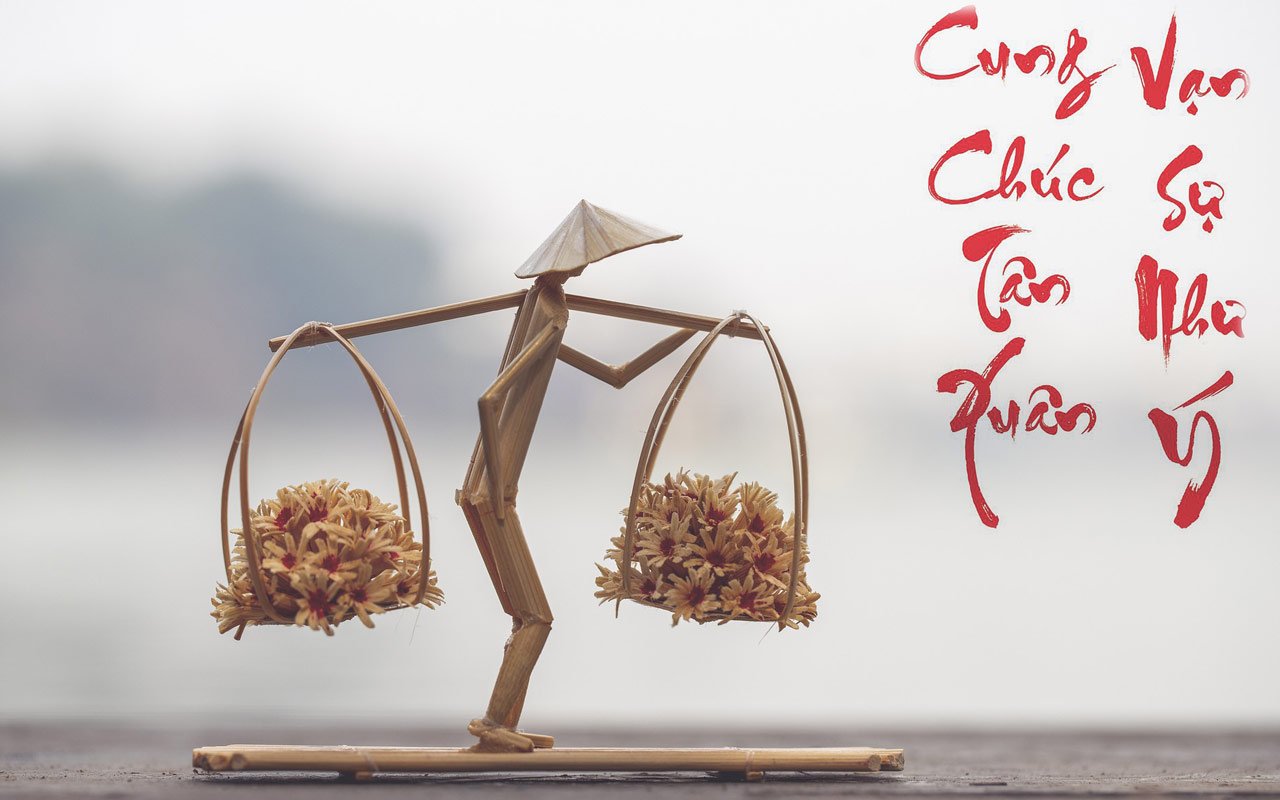
The traditional greetings are “Chúc Mừng Năm Mới” (Happy New Year) and “Cung Chúc Tân Xuân”, (Gracious wishes of the new spring). People also wish each other prosperity and luck.
The custom of wishing for Tet is indispensable for Vietnamese people. People will send each other good wishes for Tet to look forward to a more prosperous new year.
Tet is the time when we welcome a new year and say goodbye to the old year, also known as the moment of change of seasons. A new year with many new beginnings, everyone has their own dreams and ambitions. We all hope all good things will come in the next year.
That’s why the custom of wishing Tet on the first days of the year was formed. They give each other good New Year wishes to hope that their friends and relatives will also achieve their own wishes. This is a beautiful tradition of Vietnamese people on Tet holidays and has been handed down for thousands of generations. Generation after generation and so on they exchanged their best wishes.
Some meaningful wishes on Tet
May all your wishes get fulfilled in the New Year.
Chúc bạn năm mới vạn sự như ý.Wishing your family lots of happiness, prosperity, and luck this New Year.
Chúc gia đình bạn một năm mới với nhiều hạnh phúc, an khang thịnh vượng và may mắn.May you achieve all your dreams this year. A very happy New Year.
Mong tất cả các ước mơ của bạn sẽ thành hiện thực trong năm này. Chúc một năm mới thật hạnh phúc.I wish you a wealthy new year.
Chúc bạn năm mới Tấn Tài Tấn Lộc.On the occasion of New Year, wish all your family happiness and luck.
Nhân dịp năm mới tôi kính chúc toàn thể gia đình bạn một năm mới gặp được nhiều may mắn và hạnh phúc.Everything starts anew with the new year coming. May your new year be filled with the happiest things and your days with the brightest promise.
Mọi thứ lại bắt đầu khi năm mới đang đến. Chúc bạn năm mới đầy hạnh phúc và những tháng đầy triển vọng và hạnh phúc nhất.Live up to 100 years. (Do not wish this sentence to someone who is 99 years old)
Sống lâu trăm tuổi.Money flow in like water.
Tiền vô như nước.May everything be better than you wish.
Chúc bạn vạn sự thắng ý.May you succeed in business.
Chúc bạn làm ăn phát tài.Source: sgv.edu.vn
Vietnam Travel Tips During Tet
What Gifts Do Vietnamese Bring For Tet?
Meaningful and unique gifts on the Tet holiday are a cultural beauty regardless of any country. A gift on Tet holiday as a wish of peace and health on the first day of the year. That is why the gift choices on this occasion are even more carefully considered, showing the heart and respect of the giver.
During Tet, whether it is a small or large gift, it has its own meaning. Here are some gift suggestions when you come to visit Vietnamese people during Tet. These are also gifts that Vietnamese people often give each other on Tet
- Wine
- Wine and gift baskets
- A branch of peach blossom
- Red items
- Greeting cards
- Tea (Coffee)
- Tray of Mut Tet
- Nutritious and Healthy Foods
- Fruits
- Tea set or dining set
- Paintings
- Flowers, plants, or trees
- Feng Shui Products and Items
- Parallel Sentences
Visiting Vietnam During Tet
As a visitor, you may not need to experience all of the thrill and feelings that Vietnamese people experience, but there are a few things you should be aware of.
You should at least know if your next trip to Vietnam will coincide with the year’s most important event.
HuyHoa.Net prepared this advice to assist you in avoiding surprises and problems when visiting Vietnam for the New Year, with the aim that after you leave, many people would remark, “I’m very lucky to have read this.”
These tasks must be completed before you travel to Vietnam for the New Year…”
Transportation
It is sometimes impossible to arrange any mode of transportation during the month preceding Tet.
A large number of individuals will travel to and from their hometowns. From roughly the beginning of January until the end of March (Solar calendar ) is a particularly busy season, so remember to book ahead of time.
International traffic, particularly aircraft travel, will be unaffected over the holiday season.
There is no reason to be concerned if you plan to fly to or from Vietnam during Tet. If you need any supplies to travel around the country, make sure you’ve prepared them well in advance.
Accommodation
Most hotels, motels, or other accommodation facilities are open on New Year’s Day, however, the prices will increase very high. We recommend that you book hotel services in advance and should book services from reputable providers.
In famous tourist destinations, it is relatively easy to book accommodation services but in less famous places or places with a small number of hotels and motels, it will be difficult to book services. service at peak times such as Tet.
Sightseeing
All tourist attractions will be open on Tet. However, there may be difficulties in purchasing tickets (for places where tickets are required). Make sure you book your tickets in advance or find out information on how to buy tickets at those locations before you plan to visit.
Food
Restaurants also have some that will be closed, check with the restaurant you booked, and make sure they are open on the first 3 days of the year.
If you’ve booked a package tour, you won’t have to worry about these issues because the operators have already booked it for you.
Shopping
Be aware that most shops and markets will be closed for the first three days of the new year. If you want to go shopping during Tet, you should only go sightseeing and should not shop on this occasion.
Usually, the price of items on the Tet holiday will be very high. Especially souvenirs. Therefore, we recommend that you do not buy things during Tet or after Tet for at least 1 week.
Conclusion about Tet
Life will always change, Vietnamese people can live in Vietnam, in the United States of America, or anywhere in the world. However, traditional values, customs, and Vietnamese dishes will always be preserved and promoted so that future generations will always remember their roots.
Tet in Vietnam today may be different from the old days, Tet in the US may be different from Tet in the UK or in Australia, but the meaning and customs will be the common point to identify the Vietnamese community.
Depending on economic and living conditions, we can enjoy different Vietnamese traditional Tet. We collect and write this article about the Vietnamese New Year with the hope that all Vietnamese people around the world can have basic knowledge about this very meaningful holiday.
If you are a foreigner, want to visit Vietnamese families during Tet, or want to travel during Tet, the article also provides some basic information on manners, customs, traditions, and ideas about what to do or not to do. Hope the article will be of some help to you.
Above is the most basic information about the Vietnamese Tet – The Lunar New Year in Vietnam. Along with some information about the customs and habits of Vietnamese people during Tet (both people in Vietnam and Vietnamese people living abroad) and tips when traveling to Vietnam during Tet you should know.
If you have any questions or want to contribute to the list, please leave a comment or send an email to giahan[at]huyhoa.net.
Have you enjoyed the Tet atmosphere of Vietnamese people? If not, why don’t you arrange a time and schedule a trip to Vietnam during the Vietnamese Tet holiday?
Frequently Asked Questions
When is Tet 2026?
The traditional Tet holiday in Vietnam and some Asian countries usually takes place on the first day of the first month in the lunar calendar. That is, "Tet" usually falls in late January or early February on the Gregorian Calendar.
The holiday is held for about 3 to 7 days. Below is the Tet calendar of some recent years and in the future.
2024 - Year Of The Dragon
The 2024 Vietnamese Lunar New Year falls on February 10, 2024 of the solar calendar
| Year | Date | Day | Holiday |
|---|---|---|---|
| 2024 | 9 Feb to 15 Feb | Fri to Thu | Tet |
| 2025 | 26 Jan to 03 Feb | Sat to Sat | Tet |
| Previous Years | |||
| 2023 | 21 Jan to 27 Jan | Sat to Fri | Tet |
| 2022 | 31 Jan to 4 Feb | Mon to Fri | Tet |
| 2021 | 10 Feb to 16 Feb | Wed to Tue | Tet |
| 2020 | 23 Jan to 29 Jan | Thu to Wed | Tet |
| 2019 | 4 Feb to 8 Feb | Mon to Fri | Tet |
| 2018 | 14 Feb to 20 Feb | Wed to Tue | Tet |
| 2017 | 26 Jan to 1 Feb | Thu to Wed | Tet |
Are supermarkets open during the Tet Holiday?
Most convenience stores and supermarkets will be closed from the 1st to the 3rd of Tet.
During Tet, how many days are stores closed?
Depends on the store and supermarket. When it closes and opens on what day will be decided by the shop owner, not by any government regulation. Usually, shops and supermarkets are only closed for 1-3 days in the first day of the year, but there are also stores that will close until the 10th or 15th. Particularly, there are stores that close until the end of January.

